Webinar Q&A: Engineered Valve Solutions for Natural Gas
As a follow-up to our webinar, Engineered Check Valve Solutions For Natural Gas Applications, we are sharing the questions we received from the audience. The answers are provided by host Arie Bregman, vice president and general manager of DFT® Inc. and a 35-year industry veteran, who is an active member in the U.S. Valve Manufacturers Association (VMA), serving as Chairman and on the group’s education, training, and technical committees.
When it comes to compressors and the gas applications they are used in, operational efficiency and safety are top priority. Reliable check valves are needed to protect compressors and other high dollar machinery. In our webinar, we discussed the many applications in which check valves are used throughout the journey from well to distribution, as well as how to resolve flow issues and avoid failures.
If you missed this webinar, you can now view it on demand. Simply click this link.
Below, our talented host answers questions regarding engineered check valves to help you find the right type and fit.
Q: You show 4 different valve styles as options. How do you choose the best valve?
A: Sometimes it’s dictated by the face-to-face requirements of the application. That being the case, then you’ll want a shorter pattern or longer pattern, if you don’t want to modify piping. If you have a new installation then a GLC, which is a non-standard face-to-face, may be a good solution. It has a one-piece body that may offer an advantage over a 2-piece body like the Excalibur. These are some important considerations. If we are talking about a reciprocating compressor, absolutely the PDC check valve is a very strong choice, probably the best choice in our family of products for that application. It is specifically designed for reciprocating compressor service and will give you a long lifetime, high-reliability product that can be custom tailored to be the ideal valve for the application.
Q: Can all DFT check valves be mounted in a vertical line? Why does flow up vs. flow down matter?
A: All DFT axial flow check valves can be mounted in a vertical line. All our valves have a spring opposing flow direction of the valve. So why does flow up vs. flow down matter? That gets to the consideration of the weight of the disc. If the flow is going up, the disc weight will help close the valve, so a lighter cracking pressure spring will be helpful. In the case of flow down, you absolutely have to compensate for the weight of the disc with a higher cracking pressure spring.
Q: In which applications would you use flanged valves and wafer style valves?
A: It’s easier to say where I would not use wafer style valves, and that would be temperatures below -50F and above +500F. In extremes of operating temperatures the flange bolts will be at a different temperature vs. the body of the valve which could lead to bolt relaxation or bolt over stress, either of which will lead to flange gasket leakage. If there is a risk of high temperatures from fire exposure, then stay away from a wafer style valve as well unless it is a lugged body design with tapped holes for the flange bolts. The inherently shorter bolts of a RF Flanged valve make it very preferable for high levels of gasket sealing and integrity.
Q: What kind of maintenance is required with this type of valve?
A: Maintenance requirements are based on the service conditions. Many, properly sized and selected DFT check valves can perform many years and even decades with no maintenance, but that requires investing the time up front and understanding the flow requirements and engineering the valve to work reliably under those flow conditions.
Q: How do your Excalibur, GLC and PDC valves compare to non-slam nozzle check valves?
A: These are all non-slam nozzle style check valves.
Q: Would it be possible to address the advantages of DFT valves vs. other brands?
A: DFT only manufactures axial flow check valves. This style of check valve has a demonstrated, significant advantage in reducing water hammer. DFT makes several styles of this axial flow design for short pattern requirements (wafer valves) up to and including flanged (RF and RTJ) and butt weld end ASME B 16.10 face to face requirements. DFT will also work with our end users to “engineer” the right valve for their application, whether that is due to low flow, low pressure drop, or special materials of construction. We will help you by providing the right valve solution.
Q: What is cracking pressure?
A: Cracking pressure is the pressure at which flow just begins. The fluid pressure has just overcome the forces of the spring and disc weight and the valve has just started to lose contact with the seat.
Q: How can I calculate the cracking pressure?
A: Cracking pressure is stated by the manufacturer and should be readily available by them along with the Cv flow characteristic, weights and dimensions.
Q: You mentioned that a lighter cracking pressure spring will slow down the closing rate of the PDC. Are there any other disadvantages associated with a lower cracking pressure spring?
A: Some of the other disadvantages of a lower cracking pressure spring, not thinking about whether we are talking gases or liquids, is if you have a vertical line flow down you may have to go to a higher cracking pressure spring just to compensate for the weight of the disc. For vertical line flow up, you may want a lighter cracking pressure spring because you are fighting gravity and not concerned about the weight of the disc in that case as it is helping to close the valve. If we are talking strictly liquid services, then lighter cracking pressure springs will make the valve less able to reduce water hammer.
Q: What is the delivery for these valves?
A: Standard valves are available from our inventory or our distributor’s inventory for fast delivery. Special requirements will require longer lead times. Please contact DFT for your specific requirements and product availability.
Q: In general, to prolong the service life of any valve is it advisable to have centrifugal compressors in any gas plant or refinery?
A: Prolonging the life of any valve in any service often requires engineering the valve specifically for optimum service life. With check valves this starts with doing the valve sizing calculations but also involves specifying the right valve for the application. Reciprocating compressors require valves designed for that service. The DFT model PDC is designed for very long life in recip compressor service. The choice of centrifugal vs. reciprocating compressor is usually driven by the pressure and volumetric needs balanced against lifetime installed cost for those two options.
Q: With the PDC, can the amount of damping be adjusted? For example, with more compressors can it be activated and the vibration changes?
A: No. The amount of damping is set by the orifice valve internal to the valve itself and cannot be adjusted.
Q: Does DFT have a service support rep in Canada?
A: DFT is represented by Triangle Fluid Controls throughout all of Canada. Please go to their web site at: https://trianglefluid.com/ for contact information.
Q: What does a stop do?
A: The stop limits the opening travel of the valve and should be designed based on the min, normal, and max flow conditions for the valve.
Q: Does the valve require certain straight pipe length upstream and downstream?
A: We recommend 5 x NPS upstream and downstream of the valve to ensure non-turbulent flow entering the valve and for non-turbulent flow to be restored after the media exits the valve. Oftentimes, sufficient space is not available in those cases, and dual guided valves should be selected. That is a valve where the closure mechanism is supported on both the upstream and downstream sides with a stem and bushing.
Q: Is this DFT Sizing software available for customer use?
A: Access to the DFT sizing software is on a limited basis. Please visit our website and contact the DFT Sales Representative in your area to discuss access to our sizing software, or our Sales Team can assist you with the sizing of check valves for your specific applications.
Q: How do you handle mixed phase flow in your sizing program?
A: When dealing with mixed phase flow in our sizing program, there are so many different variables on how much of the different phases exist in the medium. If it is simply a 5% or so of mixture, such as water vapor in a flow of steam, then adjust specific gravity and molecular weight a little bit. However, if there is a higher mixture of the two phases—ex. 50/50—then the technique is to size it as if sizing with only a gas, then size again as if only the liquid, then proportion the two results based on those 2 sizing outputs. If you do have this or a similar situation, we recommend contacting DFT to run the sizing and consult with you on what the proper sizing result should be for your particular flow situation.
Q: If you put a travel stop in a check valve, can it be removed or changed at a later date?
A: The travel stops we use can be removed from the valve or changed. It requires the valve to be taken out of the piping system. The valves we are talking about here are for natural gas applications and are not inline repairable. Both stops and springs can be removed or changed to go to a higher or lower cracking pressure. So, all that DFT can do to engineer a valve for an application can be changed or modified for changing conditions that you may experience with the application.
Q: Could it be a water-hammer hazard when the natural gas is flowing as a gas substance in a pressurized pipes network?
A: No. Water hammer is strictly a liquid or steam phenomenon.
Q: Is it possible to have water-hammer risk if the natural gas is flowing in gaseous form in a pressurized gas piping network?
A: No. Water hammer only occurs in liquid or steam service, where condensate is present in the lines.
Q: Are your slides available for us to download?
A: Yes, they are located in our Resource Section and can be accessed here.
For more than 75 years, DFT® Inc. has helped customers find and install the right check valves for their unique applications. To learn more about our valves, and how we can assist you, contact us directly.

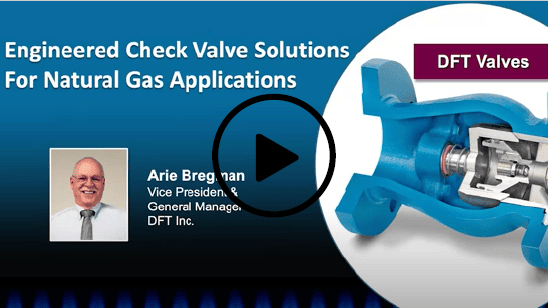




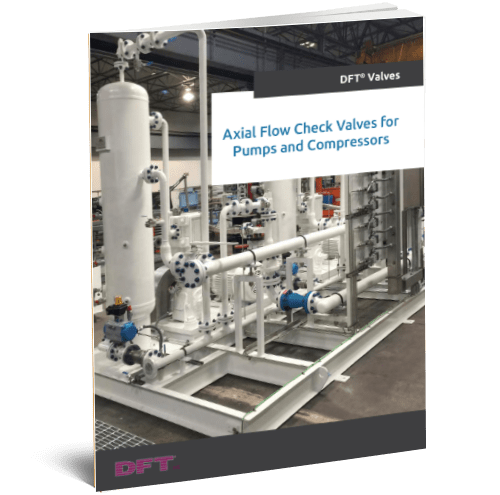
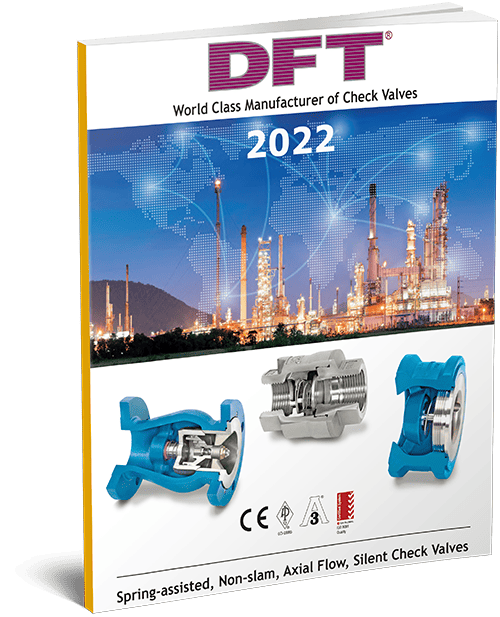
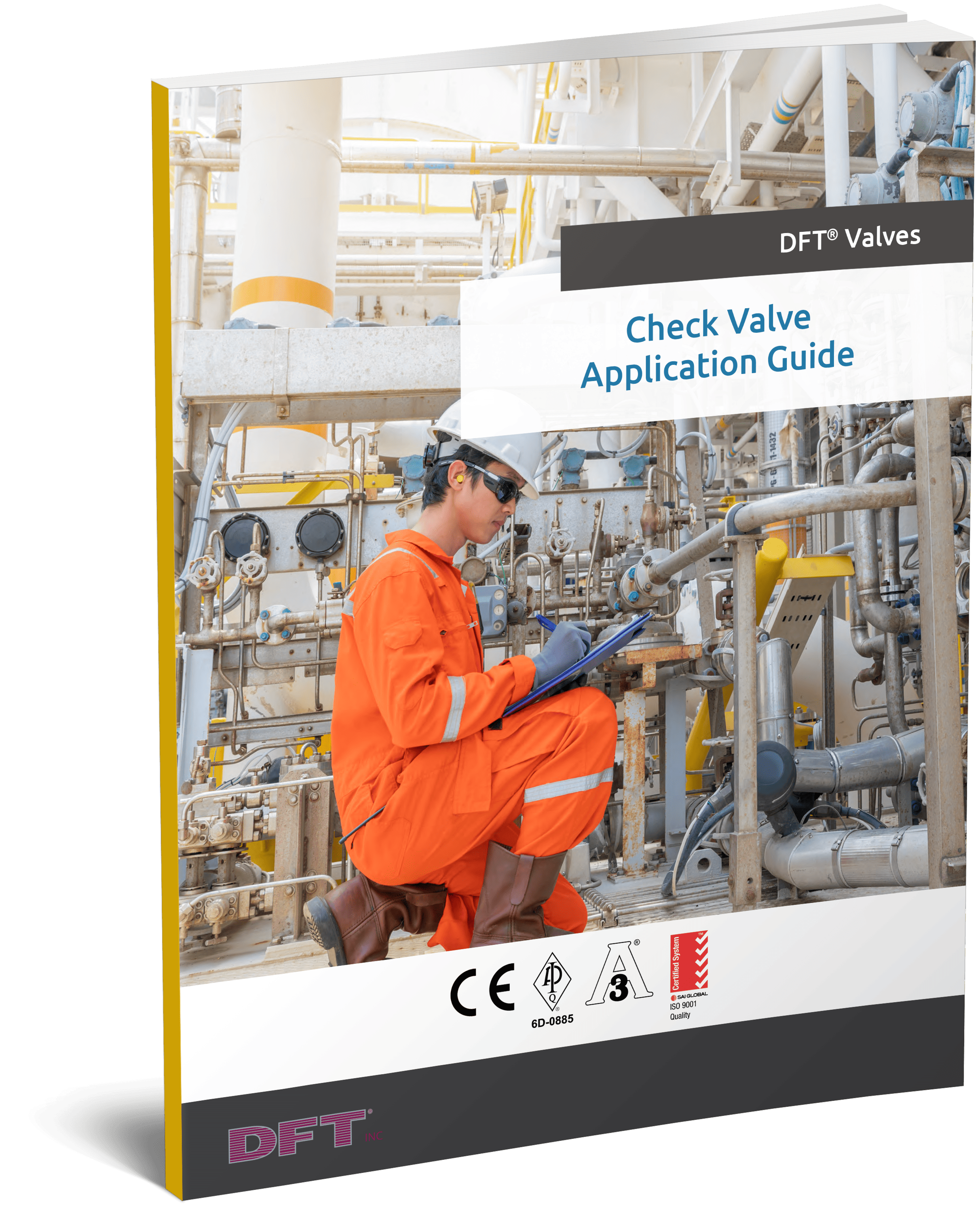

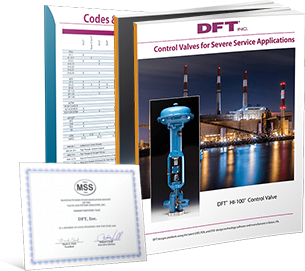
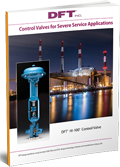
Comments are closed